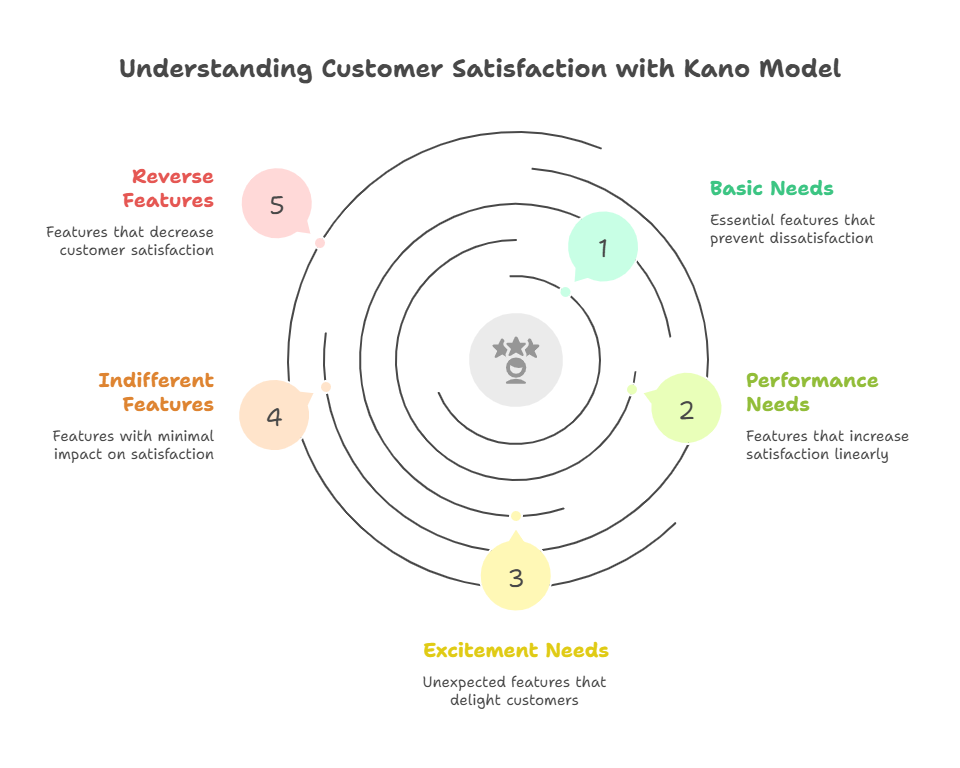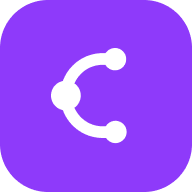What is the Kano Model? A Guide to Feature Prioritization
Learn how the Kano Model helps product teams prioritize features based on customer satisfaction. Discover the five feature categories and practical implementation steps.
What is the Kano Model?
The Kano Model is a powerful framework for product development and feature prioritization that helps teams understand how different features impact customer satisfaction. Developed in the 1980s by Japanese professor Noriaki Kano, this model provides a systematic approach to categorizing features based on their ability to satisfy customers Kano model - Wikipedia.
Product managers use the Kano Model to prioritize potential new features by grouping them into distinct categories, ensuring they focus development resources on the right mix of features that will deliver maximum customer value What is the Kano Model? - ProductPlan.

The Five Kano Model Categories
The Kano Model classifies product features into five distinct categories based on how customers perceive them and their impact on satisfaction levels.
Basic Needs (Must-Be Features)
Basic needs are the fundamental features customers expect as standard. When these features work properly, customers remain neutral, but their absence causes significant dissatisfaction. Think of these as the "table stakes" - features so essential that customers take them for granted.
Examples include:
- A car's brakes functioning properly
- A smartphone making calls
- Hotel room cleanliness
Performance Needs (One-Dimensional Features)
Performance needs create satisfaction when present and dissatisfaction when absent. These features operate on a linear scale - the better they perform, the more satisfied customers become. Customers can explicitly articulate these needs and often compare them against competitors.
Examples include:
- Battery life on electronic devices
- Website loading speed
- Fuel efficiency in vehicles
Excitement Needs (Delighters)
Excitement needs are unexpected features that create delight when present but don't cause dissatisfaction when absent. Customers typically don't ask for these features because they don't know they want them. These are the "wow" factors that can differentiate your product in the market.
Examples include:
- First-generation iPhone's multi-touch interface
- Netflix's personalized recommendations
- Amazon's one-click ordering
Indifferent Features
Indifferent features have minimal impact on customer satisfaction whether present or absent. Customers don't particularly care about these features, so investing in them provides little return on satisfaction.
Reverse Features
Reverse features actually decrease satisfaction when present. These are features that some customers actively dislike, often because they complicate the user experience or add unnecessary complexity.
How to Implement the Kano Model
Implementing the Kano Model involves a structured process that combines customer research with strategic analysis.
Conduct Kano Surveys
The foundation of Kano analysis is a standardized questionnaire that helps gather customer feedback about their responses to potential features Kano Analysis: the Kano Model Explained - Qualtrics. The survey presents each feature with two questions:
- Functional form: "How would you feel if this feature were present?"
- Dysfunctional form: "How would you feel if this feature were absent?"
Responses are typically measured on a five-point scale from "I like it" to "I dislike it."
Analyze and Categorize Features
Once you've collected survey data, analyze the responses to categorize each feature. The categorization helps product teams understand which features will deliver the most satisfaction per development dollar spent.
Prioritize Development Efforts
Use the Kano categories to create a strategic development plan that balances basic needs, performance features, and excitement generators. This approach prevents wasted time and resources on features that don't appeal to target customers Kano Analysis: the Kano Model Explained - Qualtrics.
When to Use the Kano Model
Product managers should consider using the Kano Model in several key scenarios:
- Prioritizing feature development when resources are limited
- Improving customer satisfaction with existing products
- Evaluating new product opportunities and feature sets
- Understanding competitive positioning and differentiation opportunities
As one product manager noted, "By using the Kano Model, we were able to prioritize our development efforts and improve customer satisfaction, leading to increased revenue and market share" The Kano Model in Product Management.
Benefits and Limitations
Key Benefits
The Kano Model offers several significant advantages for product teams:
- Systematic approach to feature prioritization
- Customer-centric focus based on emotional responses
- Prevents feature bloat by identifying indifferent features
- Reveals hidden opportunities through excitement needs
- Helps balance short-term and long-term development
Potential Limitations
While powerful, the Kano Model has some limitations to consider:
- Customer preferences evolve over time (excitement features become basic needs)
- Survey implementation can be time-consuming
- May not capture all contextual factors affecting satisfaction
- Requires regular updates as market conditions change
Putting Kano Analysis into Practice
For product teams looking to implement the Kano Model, start with these practical steps:
- Identify key features currently in development or consideration
- Design and distribute the Kano survey to your target audience
- Analyze responses to categorize each feature
- Map features onto the Kano model diagram
- Make strategic decisions about development priorities
The Kano Model is particularly valuable for product teams with limited time and resources who want to ensure they prioritize the appropriate mix of features What is the Kano Model? - ProductPlan.
If you're looking to implement the Kano Model for your product planning, consider using ClipMind's Kano Analyzer to streamline the categorization process and create visual mind maps of your feature priorities.
 ClipMind
ClipMind